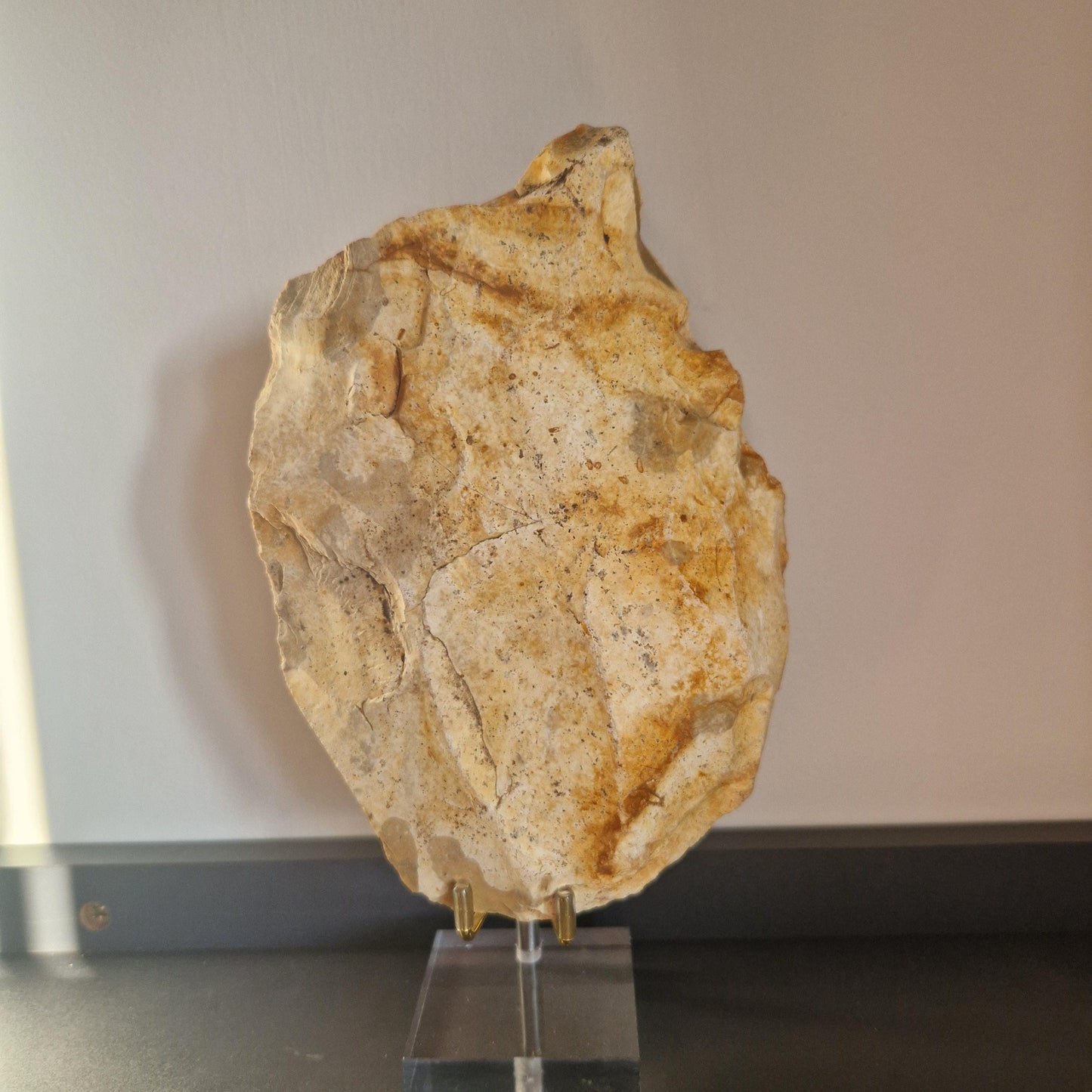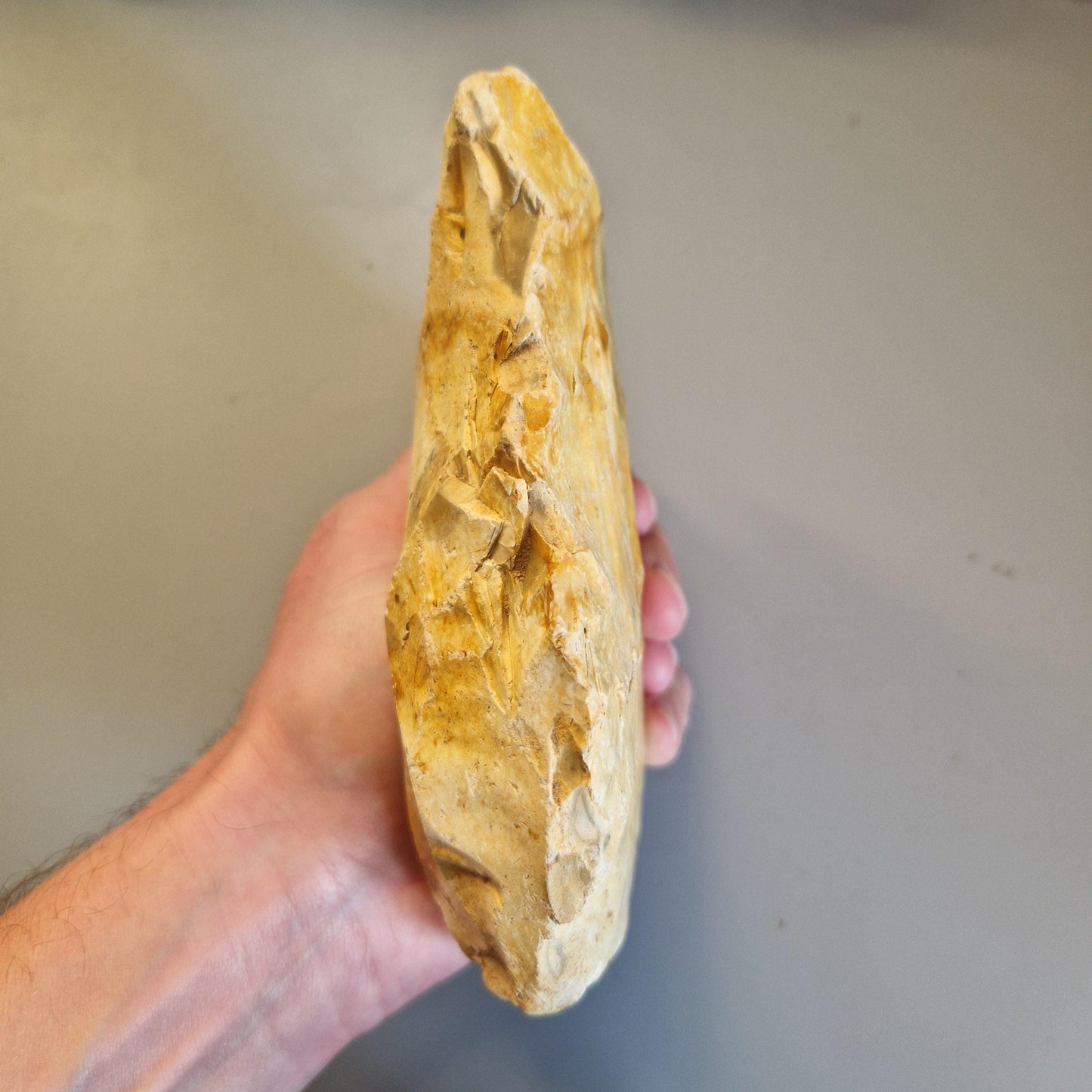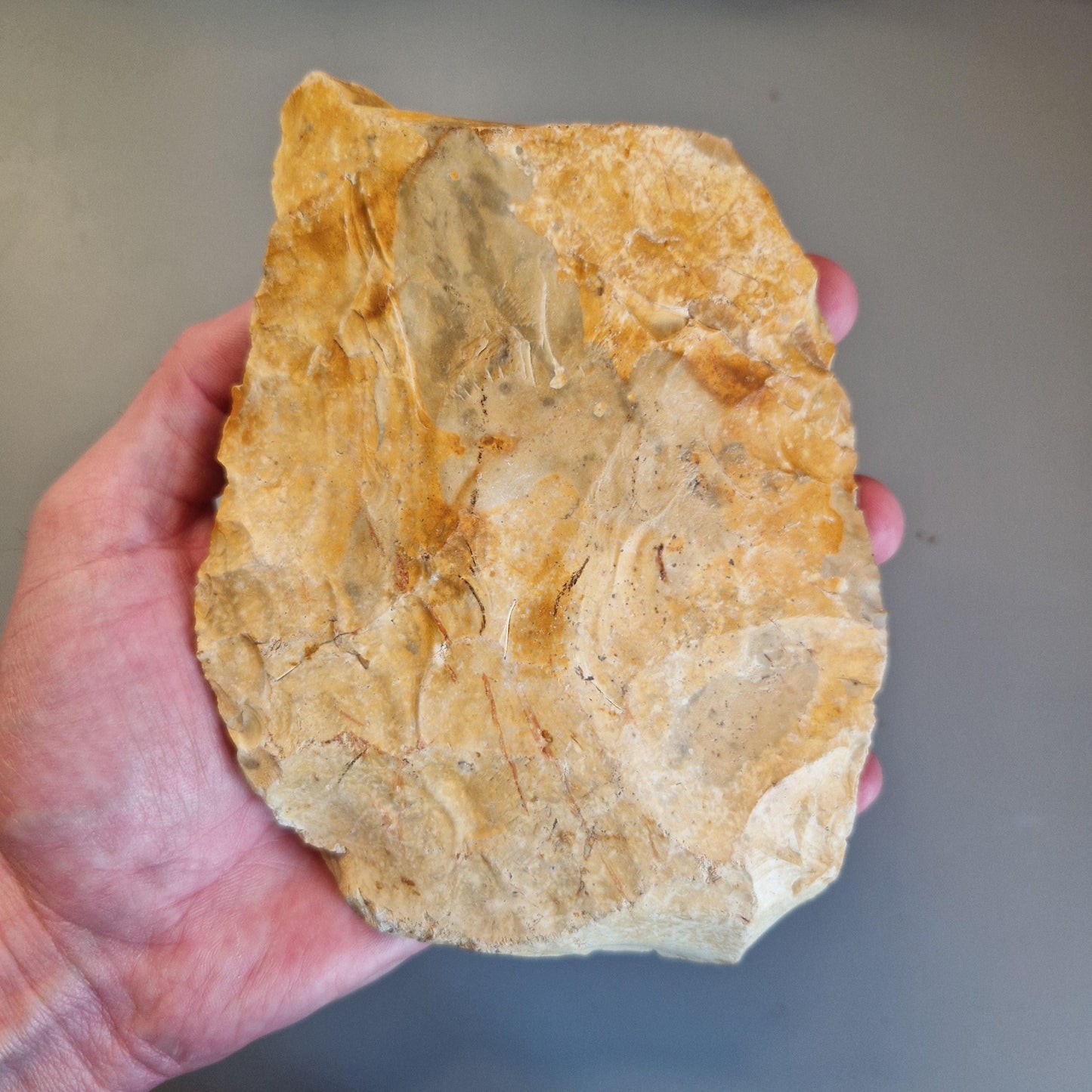Stone Age Artifacts
Huge English Lower Palaeolithic Flint Handaxe. Nr Dereham, Norfolk (Acheulean)
Huge English Lower Palaeolithic Flint Handaxe. Nr Dereham, Norfolk (Acheulean)
Couldn't load pickup availability
A truly huge Lower Palaeolithic Flint Handaxe.
Found at Nr Dereham, Norfolk, England.
(Acheulean)
Please note that orders outside of the UK will require an export licence, this can take 4 to 6 weeks to arrange on average.
Found in the 1970s and kept in his collection until his passing.
This is one of the largest Palaeolithic Handaxe I have held, remarkable piece. The tip has been snapped off in Antiquity, maybe from use, the patina is consistent across the break.
This is an opportunity to buy an artefact at a fraction of the price it would be if complete. I personally like it due to the break and adds to the mystery of our ancient ancestors.
It has a beautiful pale cream patina with splashes of iron staining.
As you can see from the photos, it displays so well and is a great centre piece for any collection.
Length 16cm
Width 11.3cm
Weight 876g
Circa 450,000 to 250,000 years old.
Sent via Royal Mail Special Delivery. Securely packed.
Condition is shown in pictures and video.
Prehistoric Age-
Acheulean industry
prehistoric toolmaking
Also known as: Acheulian industry
Written and fact-checked by
Article History
Acheulean industry, first standardized tradition of toolmaking of Homo erectus and early Homo sapiens. Named for the type site, Saint-Acheul, in Somme département, northern France, Acheulean tools were made of stone with good fracture characteristics, including chalcedony, jasper, and flint; in regions lacking these, quartzite might be used. During the Acheulean Stage of the early Paleolithic Period, which began between 1.7 million and 1.5 million years ago and lasted until 250,000 to 200,000 years ago, the presence of good tool stone was probably an important determining factor in the distribution of early humans. In the later stages they learned to bring stone from distant areas and thus became freer in their choice of homesites. “Tool kits” that differ in tool types reflect the varying adaptations made by early Stone Age humans to different environments.
Acheulean also spelled: Acheulian
Related Topics: Abbevillian industry Chellean industry Micoquian industry
The most characteristic Acheulean tools are termed hand axes and cleavers. Considerable improvement in the technique of producing hand axes occurred over the long period; anthropologists sometimes distinguish each major advance in method by a separate number or name. Early Acheulean tool types are called Abbevillian (especially in Europe); the last Acheulean stage is sometimes called Micoquian. Industries that existed at the same time and overlapped in geographic range, but specialized in flake tools and lacked hand axes, are known as Clactonian (England) and Tayacian (western and central Europe). Acheulean industries are found in Africa, Europe, the Middle East, and Asia as far east as Kolkata, India (East Asia was characterized by a tool tradition called the chopper chopping-tool industry).
November 3, 2015. According to the Israel Antiquities Authority, after years of excavations the remains of, the Acra, used by the Greeks more than 2,000 years ago to control the Temple Mount. Jerusalem. Archeology.
The earliest hand axes, such as those found with Homo erectus in Bed II at Olduvai Gorge in Tanzania, were crude pointed bifaces: chips were removed from both sides of a core by rapping it against a set “anvil” stone to form a sinuous cutting edge all around. In the next step a hammerstone replaced the “anvil,” and the whole surface of the core was flaked away to form an oval implement with relatively straight edges. Small flakes were sometimes removed from the edges to further straighten them. Later still, the hammerstone was replaced by bone or wood “hammers,” which removed smaller, flatter flakes and resulted in a smoother tool with a sharp, straight edge. A sinuous edge could be produced purposefully, resulting in a “saw.” In the late Acheulean, hand axes were pointed, and the butt end was often only roughly finished. Cleavers were large tools with one end squared off to form an axlike cutting edge.
In addition to hand axes and cleavers, the Acheulean industry included choppers and flakes. The latter were produced from a prepared core and could be used as knives without further change or could be chipped to make side-scrapers, burins, and other implements. Though bone and wood were probably also used as tools, little evidence of them remains, and no discussion of style can be attempted. At the beginning of the Fourth (Würm) Glacial Period, Acheulean industries were gradually replaced by (graded into) the Levalloisian stone-flaking technique and the Mousterian industry in Europe and the Fauresmith and Sangoan industries in Africa.
Share









